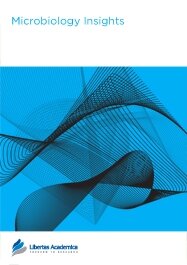

Publication Date: 28 Jun 2008
Journal: Microbiology Insights
Citation: Microbiology Insights 2008:1 13-24

1Department of Microbiology and Immunology, Biosciences Institute, São Paulo State University, Rubião Júnior, Botucatu, SP, 18.618-000, Brazil. 2Department of Tropical Diseases and Imaging Diagnosis, School of Medicine, São Paulo State University, Rubião Júnior, Botucatu, SP, 18.618–000, Brazil.
Abstract
Representatives of the Staphylococcus genus are the most common pathogens found in hospital environments, and they are etiological agents for a large variety of infections. Various virulence factors are responsible for the symptoms and severity of infections caused by Staphylococcus aureus. Among them are staphylococcal enterotoxins (SEs), which cause staphylococcal food poisoning, and toxic shock syndrome toxin-1 (TSST-1). Some reports indicate that TSST-1 and staphylococcal enterotoxins are also produced by coagulase-negative staphylococci (CNS). The present review aimed to discuss general aspects of staphylococcal toxins as well as the epidemiology, genetics and detection of toxins in Staphylococcus aureus and coagulase-negative staphylococci, since these microorganisms are becoming more and more frequent in nosocomial infections.
PDF (275.43 KB PDF FORMAT)
RIS citation (ENDNOTE, REFERENCE MANAGER, PROCITE, REFWORKS)
BibTex citation (BIBDESK, LATEX)

My experience with Libertas Academica publications has indicated that Libertas Academica has not only implemented a highly efficient reviewer system, which provides candid and valuable comments on manuscripts, but also assembled a dedicated editorial production team, which is constantly striving for world-best practice. I recommend Libertas Academica publications highly.
Facebook Google+ Twitter
Pinterest Tumblr YouTube